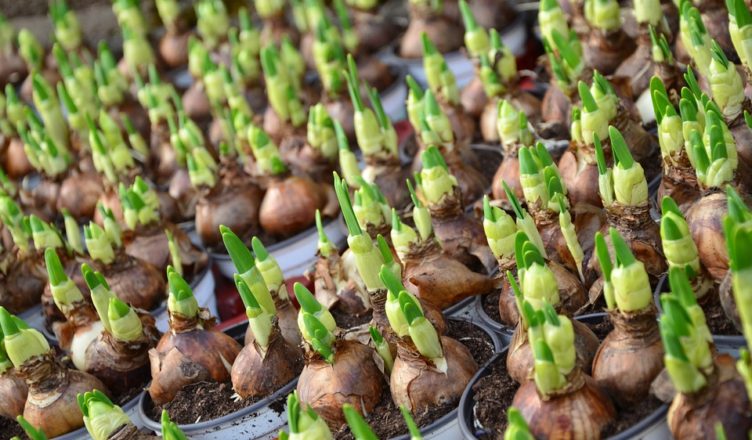There is nothing quite as welcome as those beautiful spring flowers that seem to emerge from nowhere to welcome the arrival of spring. Bulb type flowers are really unique plants, because they spend most of their days resting quietly beneath the surface of the soil. Then right on schedule, up they come, full of bloom and vigor, and then almost as fast as they came, they go. Except for the green leafy part of the plant that tends to linger longer than we would like them to.
Despite their short bloom time and unattractive foliage after the blooms are gone, they are still a wonderful addition to any landscape. But how should you care for them? First let’s talk about how to use them in your landscape. Flowers of all kinds are best when planted in groupings. Many people buy 25 or 50 bulbs and just go around the yard planting helter skelter.

That’s fine if that’s what you want, but when planted that way they tend to blend in with the landscape and really don’t show up well at all. When you plant them in large groups they are a breathing taking show piece.
In the early spring start thinking about where you would like to create a bed for flower bulbs. Prepare the bed by raising it with good rich topsoil, and if at all possible add some well composted cow manure. Do this in the spring while you are in the gardening mood, you may not be in the fall. Over the summer fill the bed with annual flowers to keep the weeds down, and to pretty up your yard for the summer. Come fall all you have to do is pull out the annuals and plant your bulbs to the depth recommended on the package.
If you think you could have a problem with squirrels digging up the bulbs and eating them, you can also wrap the bulbs in steel wool leaving just the tip of the bulb exposed so it can grow out of the little wire cage you’ve created. Or you can just plant the bulbs and then cover the bed with chicken wire or plastic fencing until the bulbs start to grow in the spring.
When the bulbs come up in the spring and start blooming, you should clip off the blooms as they start to wither. This keeps the bulb from producing seeds, which requires a lot of energy, and you want the bulb to use all of it’s available energy to store food in preparation of the bulb’s resting period. Once the bulbs are completely done blooming you don’t want to cut off the tops until they are withered and die back. The million dollar question is how to treat the tops until that happens.
Many people bend them over and slip a rubber band over them, or in the case of bulbs like Daffodils tie them with one of the long leaves. This seems to work because it is a very common practice among many experienced gardeners. However, Mike is about to rain on the parade.
I strongly disagree with this theory because back about 6th grade we learned about photosynthesis is science class. To recap what we learned, and without going in to the boring details, photosynthesis is the process of the plant using the sun’s rays to make food for itself. The rays from the sun are absorbed by the foliage and the food making process begins. In the case of a flower bulb this food is transported to the bulb beneath the ground and stored for later use.
So basically the leaves of the plant are like little solar panels. Their job is to absorb the rays from the sun to begin the process known as photosynthesis. If we fold them over and handcuff them with their hands behind their back, they are not going to be able to do their job. It’s like throwing a tarpaulin over 80% of a solar panel.
In order for the leaves to absorb the rays from the sun, the surface of the foliage has to be exposed to the sun. On top of that, when you bend the foliage over, you are restricting the flow of nutrients to the bulb. The veins in the leaves and the stem are a lot like our blood vessels. If you restrict them the flow stops.

You decide. I’ve presented my case. Bending them over seems to work, but I’ve spent a lot of money on my bulbs. I want them running at full speed. What I do is clip the blooms off once they are spent, and just leave the tops alone until they are yellow and wilted. If they are still not wilted when it’s time to plant my annual flowers, I just plant the annuals in between the bulbs. As the bulbs die back the annuals tend to grow and conceal them. If one shows through I clip it off. It seems to work well for me.
source : Mike McGroarty




I’m thinking about planting my bulbs in pots this spring. I have a huge bag of bulbs that were supposed to be in the ground for winter, but apparently I got too lazy to plant them! I’m hoping they will still be okay!